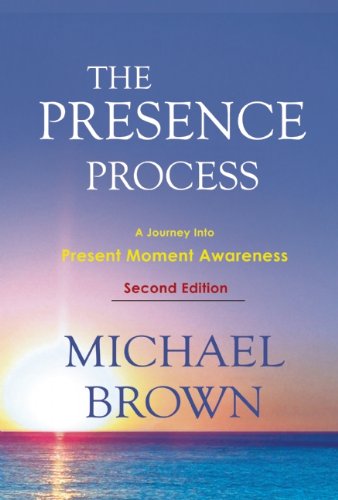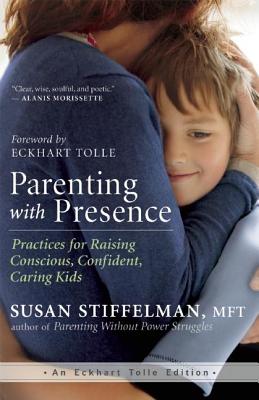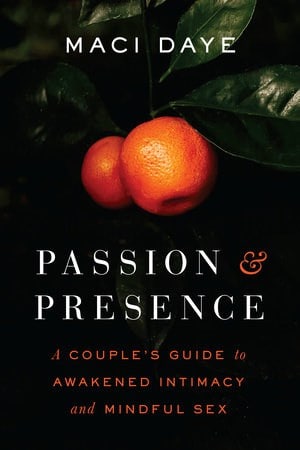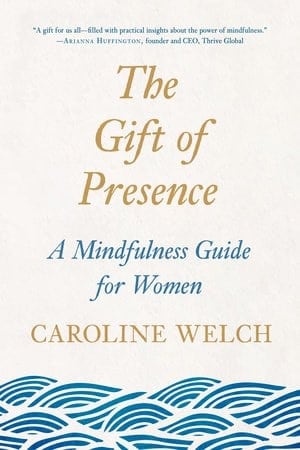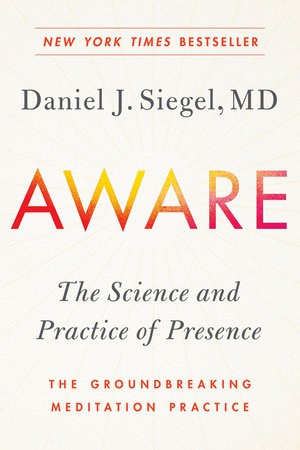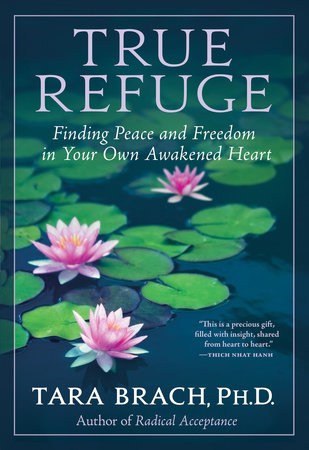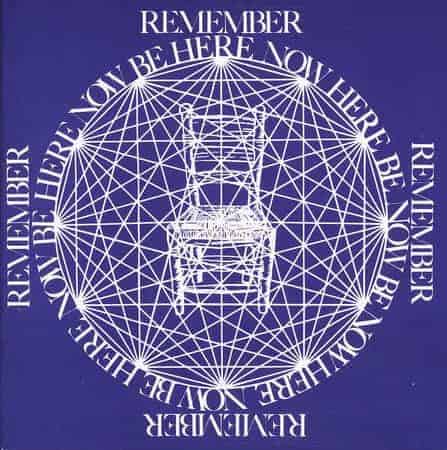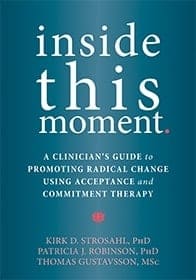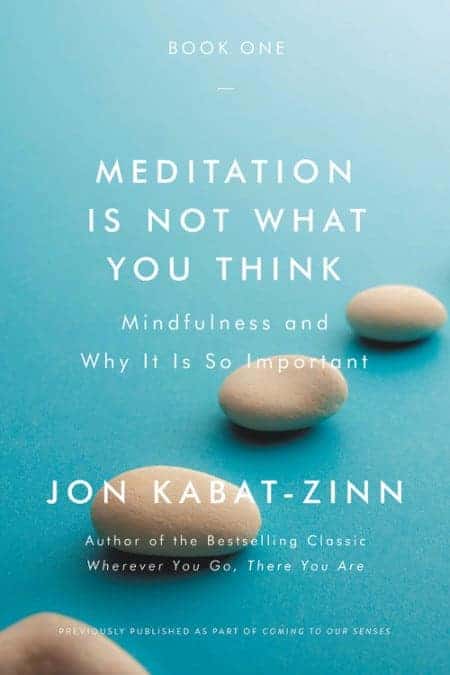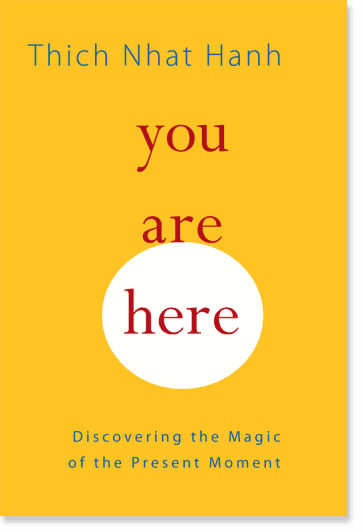Mindfulness and Presence
Present-Moment Awareness: Overview, Benefits, and Practice
THC Editorial Team October 14, 2021

Contents
- Overview
- What Is the Present Moment?
- What Is Present-Moment Awareness?
- How to Cultivate Present-Moment Awareness
- The Potential Benefits of Present-Moment Awareness
- Scientific Research on Present-Moment Awareness
- Limitations/Risks Related to Present-Moment Awareness
Staying in the “present moment,” “being here now,” and similar guidance from well-meaning confidants may seem more prevalent these days. The inability to remain focused on the moment at hand has been an increasing source of mental stress and anxiety worldwide, especially with the increased connectedness brought on by modern technology. Focusing on the past can lead to feelings of regret and guilt; worrying about upcoming events or ruminating on what might happen in the future can potentially cause anxiety or steal joy from the current moment.1 Yet, for centuries, many world religions, traditions, and philosophies have lauded the benefits of being mindful of and living in the present moment.
The constant stream of distractions and interruptions people experience throughout their days can trigger the natural stress response and lead to increased levels of hormones like adrenaline and cortisol.2 Scientists link chronic stress to pain, inflammation, and high blood pressure. Constant stress and anxiety can increase the chances of serious health issues.2
Practices that foster mindfulness and present-moment awareness help reduce the impact of this trend of distraction-induced stress. People who practice meditation and other mindfulness-based activities can learn to recognize and dismiss stressful thoughts. Mindfulness is not about clearing the mind. Instead, it is learning to acknowledge thoughts and let them pass without drawing focus away from the moment.
Attention to the present moment does not mean never remembering the past or planning for the future. It is the recognition that real life happens in the moment. Memories of the past can be pleasant or painful, but they are only thoughts. Looking to the future can cause stress or hopeful anticipation, but the imagined future is also simply a creation of the mind.
What Is the Present Moment?
Albert Einstein’s theory of relativity suggests that time is not absolute; it is something that people experience relative to the world around them.3 However, one globally common way people experience time is through three divisions: past, present, and future.
The mindfulness movement has grown considerably in recent decades; more and more mindfulness-based interventions are displaying effectiveness in treating mental health conditions and improving overall well-being.4 A characteristic of mindfulness is complete, conscious awareness of one’s emotions, thoughts, and experiences in the present moment.5 The “present moment” is the ever-changing, moment-to-moment basis in which we live.
Recent scientific studies suggest that the memories that symbolize our past are not entirely reliable. Mindfulness traditions suggest that anytime a person dwells on the past or future, they are nurturing an illusion—because the past is history and the future is uncertain, the present moment is all that exists.6 The past has already happened and cannot be undone.7
The future is unpredictable. While people can talk about probabilities, there are too many variables to guarantee any level of accuracy. The person worrying about a job interview in the morning cannot predict broken water mains, meteorites, or other disruptive possibilities.
The present moment is simply what a person is experiencing at a given point in space and time. The present moment happens now, not before or after. The present moment occurs here, not over there or somewhere else.
What Is Present-Moment Awareness?
Present-moment awareness is a practice in which someone focuses attentively on what is occurring in this moment, including a host of sensations like actions, feelings, and experiences. The Zen teacher Suzuki Roshi said, “When you eat, you should eat. When you sleep, you should sleep.”8 In this example, rather than rushing through a meal to get to the next activity, attention to the present moment means savoring the food and company.
This type of attention can be practiced in any situation—from work to play. In a work setting, someone might focus entirely on the message they are conveying in the email they’re composing instead of preemptively thinking about other items on their to-do list. During recreation, the present-minded person can devote themselves entirely to their pickup basketball game, enjoying every aspect of the activity and noticing minute details like their wrist flicking the ball toward the hoop.
What Is the Relationship Between Mindfulness and Present-Moment Awareness?
Present-moment awareness is a central tenet of mindfulness. Mindfulness has been described as “the tendency to be highly aware of one’s internal and external experiences in the context of an accepting, nonjudgmental stance toward those experiences” by the developers of the Philadelphia Mindfulness Scale, an assessment of present-moment awareness and acceptance.9
How to Cultivate Present-Moment Awareness
Many people struggle to live in the moment and may be surprised to realize how often they ruminate on the past or worry about the future. However, mindfulness practices, including meditation, are helpful ways to cultivate an awareness of the present. People may even experience rapid positive effects when they simply take the time to slow down and focus on internal and external stimuli.
For example, focusing on the present during meditation typically begins with paying attention to the breath. Meditation teaches people to sit silently and focus on the air as it enters and exits the lungs. If someone’s mind wanders from this deep attention to the breath, they learn techniques to help them recenter on the body, the breath, and the moment.
In other circumstances, present-moment awareness involves paying intense attention to embodied senses. Washing dishes becomes a mindful activity when the washer focuses on the feel and temperature of the water, the smell of the dish soap, the sound of clinking silverware, the heft of each plate, and the colors refracted in the suds. Even eating can become a mindful activity when people chew slowly and notice the range of tastes and textures they encounter. This type of attention to the moment may change the way people experience food, and people may be more apt to recognize when they are satiated if they are paying close attention to their bodies.
Developing this ability to focus on the moment takes time. However, the way to begin is through simple, targeted practices to help cultivate present-moment awareness, such as those that follow.
Meditation
Meditation is the most common practice for learning present-moment awareness, as they go hand in hand; a tenet of meditation is mindfully focusing on the present moment.6 Many cultures and religions tout meditation as a central practice: Transcendental and Zen Buddhist traditions focus on breath and silence,10 Hindu meditation works with a repeated mantra to focus on the moment,11 and Christian contemplative traditions use scriptural prayer as a means of focus.12
Breath Awareness
Paying attention to the breath is another technique that helps people focus on the present moment’s sensations. Breathing is an unconscious action regulated by the nervous system, and although people are constantly breathing, they hardly notice it. Deep-breathing techniques help promote calmness and direct awareness toward the body, away from the mind.13 Breath counting is a popular technique of breath awareness because it gives a purpose to the mind (i.e., the counting) and awareness to the experience and feeling of breathing.14
Body Scan
A body scan, a common component of yoga and other mindfulness practices, is the intentional observation of the feelings and sensations of the body. Some people use body scans to relax as they prepare for sleep. A body scan can be guided or conducted on one’s own. Usually, in yoga, the person begins by lying on their back with their arms extended at their sides; this is Savasana, or corpse pose. They sweep through the body, focusing their attention wholly on one region at a time, often starting with the toes and moving upward, and then relaxing each muscle.15
Grounding Techniques
According to Dr. Sarah Allen, “grounding basically means to bring your focus to what is happening to you physically, either in your body or in your surroundings, instead of being trapped by the thoughts in your mind that are causing you to feel anxious.”16 Grounding exercises may include pressing our feet firmly on the ground; walking barefoot; being in nature; patting, tapping, or hugging ourselves; and paying attention to our surrounding sensory experiences, such as sounds, smells, things in sight, and so on.
Mindful Walking
In Zen Buddhism, kinhin is the practice of walking meditation. In this meditation style, the participant focuses on the feeling of walking. They walk at a slow and relaxed pace and notice the transition as the foot slowly rolls from heel to toe. They enjoy feelings of peace, acceptance, and joy as they focus on the sensation of walking and allow their worries to fall away.17
Walking in nature is another way to focus on the moment. Instead of strolling quickly down a trail, the walker can pay attention to all the sights and sounds. The person becomes aware of everything happening around them in that moment.
Mindful Listening
When people are in conversation, they do not always remain focused on the speaker. They may be thinking about their subsequent argument or response. Mindful listening involves keeping complete attention on the speaker and allowing their words to sink in before responding.
Someone can practice mindful listening by first calling attention to their breath, noticing it in their body. Next, they acknowledge any thoughts and judgments and then bring attention back to their breath until their mind quiets. Finally, they notice any tension in their muscles and then release it with their breath. While listening, whenever they find their mind wandering, they need only to focus on their breathing to return to listening mindfully and focusing on the present conversation.18
Being in Nature
Simply being in nature has been known to improve people’s moods. When people practice mindfulness and awareness of the present while in nature, the benefits only increase. A 2019 study in which one group was assigned to walk indoors, another to walk outdoors, and a third to walk outdoors and practice mindfulness found that though all the outdoor walkers experienced some benefits of nature, those trained in mindful awareness enjoyed the experience the most. In addition to improved mood, they experienced a greater awareness of their surroundings, a stronger connection to nature, and less negative mood and feelings.19
Art
The visual arts are full of small details. Yet many people in an art gallery miss them as they move from one painting to the next. Contemplating a picture over time at different distances and angles will help the viewer focus on the details.
Additionally, creating art can help maintain present-moment awareness. To create art, one must focus on the precision of the muscles, the vision they have for the piece, and the inspiration behind it. Creativity exists in the present moment.20
The Potential Benefits of Present-Moment Awareness
Research has shown that those who commit to the practice of present-moment awareness can enjoy numerous benefits, including
- increased happiness, contentment, and quality of life;9,21
- greater sensations of pleasure;9
- less negative mood and emotions;9
- more successful weight management;9
- improved mental clarity;22
- better immune function;22
- an enhanced ability to empathize with others;22
- increased concentration;23
- decreased anxiety;23
- better emotional management;24
- increased self-regulation;
- increased values-consistent behavior;25,26 and
- an increased ability to cope with daily stressors.26
Giving full attention to the activity at hand has benefits such as greater productivity and better results. Unfortunately, often when people look to be more productive, they try multitasking. They feel that they can do more if they are handling several projects at once. However, the ability to multitask is a myth. Instead of getting more done, the person is simply switching their attention between tasks. They are also losing time as their brains make the transition from one activity to the next.27
By definition, present-moment awareness necessitates paying attention to bodily sensations and perceptions and clearing the mind of any judgments or worries. This mental clarity is important in high-stress situations or periods to cope with the present without worrying about the future.22
In addition to its benefits to oneself, present-moment awareness can enhance relationships with others in several ways. First, giving complete attention to a person makes them feel seen and heard. Second, present-moment awareness can inspire values like compassion, gratitude, and kindness toward others. Third, observing the value of the moment with another will encourage greater engagement and interaction. Finally, families that work with present-moment awareness will spend more time at play together and less time focused on their electronic devices.
Scientific Research on Present-Moment Awareness
People who routinely engage in mindfulness practice are often willing to share personal stories of its benefits. However, some health professionals have expressed concerns about the practice’s possible placebo effects; these individuals might feel better simply because they believe they should. To understand more about the effectiveness of present-moment awareness as a tool to aid health and well-being, psychologists and neurobiologists have examined how mindfulness meditation affects the nervous system.28
One important discovery shows that routine mindfulness exercises create both structural and functional changes in the brain.29 One study used MRI scans on participants, half of whom were avid meditators who had been practicing for nearly 20 years and half of whom were in a control group. The results showed increased gray matter in the frontal lobe of meditators, with the highest levels of gray matter in those with the most meditation experience.30 Functionally, mindfulness-based interventions can reduce symptoms of trauma, such as avoidance, and can prevent depressive relapses.29
Other studies have examined the practical benefits of present-moment awareness. According to some research, learning to dwell in the moment can alleviate sleep disorders.31 It has also been associated with lower levels of stress and discomfort in cancer patients.32
Finally, a growing body of research has pointed to the possibilities of using present-moment awareness as an intervention for people with PTSD.33 One symptom of this mental condition occurs when a patient repeatedly replays a traumatic event in their mind. Mindfulness exercises can help patients create separation between the past event and the present moment.
Limitations/Risks Related to Present-Moment Awareness
Becoming more aware of unpleasant inner, private experiences, such as rejection, can lead to a greater sense of hostility and anger.9 Heightened awareness and increased self-focus have also been associated with feelings of anxiety, depression, substance abuse, and others.9 These, however, may be associated with a heightened awareness that does not accompany acceptance and nonjudgment.9
Some researchers have also cautioned about giving too much weight or value to being present and what can be referred to as “here-and-nowism.”34 They suggest that the allure of modern present-moment awareness pursuits are primarily surface level and do not entail the deeper work and awareness of suffering required for the authentic personal growth journey.34
Living in and Learning From the Present Moment
The pace of the modern world continues to evoke feelings of stress and worry. Living in the present moment offers a meaningful enhancement of whole person health.











